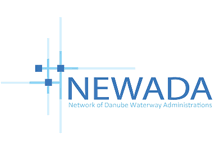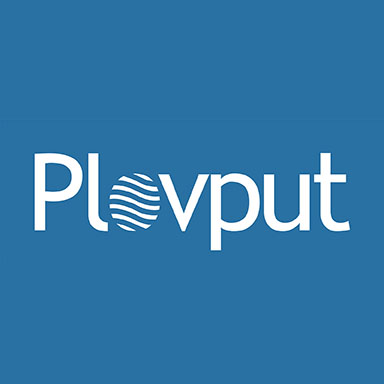


General information
The project NEWADA (Network of Danube Waterway Administrations) was a part of the South-East-European Transnational Cooperation Program, which aims were to develop transnational partnerships on matters of strategic importance, in order to improve the territorial, economic and social integration process and to contribute to cohesion, stability and competitiveness of the region.The South East Europe Program (SEE Program) helps to promote better integration between the Member States, candidate and potential candidate countries as well as neighboring countries.Under its 4 Program Priorities:
- Priority axis 1: Facilitation of innovation and entrepreneurship
- Priority axis 2: Protection and improvement of the environment
- Priority axis 3: improvement of the accessibility
- Priority axis 4: development of transnational synergies for sustainable growth areas
Duration, geographical coverage and consortium
- NEWADA started in April 2009 and ended in March 2012 which gives a duration of 36 months.
- Project team consisted of 12 project partners from 8 Danube countries.
- The project also had an Advisory Board consisted of Ministries, the Danube Commission, the International Sava River Basin Commission, the International Commission for the Protection of the Danube River (ICPDR) and other relevant actors.

Lead Partner
via donau – Österreichische Wasserstraßen-Gesellschaft mbH;www.via-donau.org
Budget
Total budget: 2.864.546 €EU-ERDF financing: 2.224.960 €
Public financing: 431.182 €
IPA financing: 208.404€
Objectives & Activites
NEWADA, Network of Danube Waterway Administrations was aimed to increase the efficiency of the Danube as the European Transport Corridor VII by intensifying cooperation between waterway administrations to promote inland navigation as a cost-effective and environmentally friendly mode of transport.- Cooperation on hydrological and hydrographical tasks will be intensified in order to achieve a higher impact. The efficiency of daily work has to be increased through the exchange of know-how among experts as well as through the identification of best practice cases.
- Physical accessibility of the waterway infrastructure will be improved. National action plans, feasibility studies, bilateral projects and implementation guidelines for improving waterway maintenance and river engineering will be worked out in cooperation with other Danube countries.
- Access to ICT (Information and Communication Technology) networks and services will be enhanced in order to overcome shortcomings. Up-to-date waterway related data will be provided to waterway administrations of neighbouring countries, third parties and users.
- Responsible stakeholders will be integrated and cooperation will be fostered. The communication between waterway administrations, development agencies and Ministries of Transport shall be enhanced. Waterway administrations shall be transformed into service oriented organizations in order to meet user demands.
Work package overview
- WP 1
- WP 2
- WP 3
- WP 4
- WP 5
- WP 6
Benefits are the following:
- National strategy plans for waterway maintenance, hydrology and hydrography was prepared, which were the basis for pilots, implementation guidelines and further bi-or multilateral projects;
- A web portal containing relevant fairway related data was established according to European Standards;
- The elaboration of an organizational strategy for each country is foster cooperation between the waterway authorities, development agencies and ministries within each country;
- The “Board of Directors” involves the directors of each waterway administration will be implemented in the run of the project and is meant to exist also after the lifetime of the project NEWADA. Within this board strategic issues shall be discussed and common approaches shall be agreed;
- Cooperation of Danube waterway administrations is strengthened by holding regular meetings of Board of Directors.
- More than 80 representatives of Stakeholders took part in the final presentation of the project NEWADA, held on 29 March 2012 in Belgrade. The organizer of the event was the Directorate for Inland Waterways (Plovput).
Partneri
| Country | Partner | Web |
| Austria | Via Donau | www.via-donau.org |
| Slovakia | SVP | www.svp.sk |
| Hungary | SOE | www.rsoe.hu |
| VITUKI | www.vituki.hu | |
| VKKI | www.vkki.hu | |
| Croatia | APP | www.vodniputovi.hr |
| Serbia | Plovput | www.plovput.gov.rs |
| Romania | ANC | www.acn.ro |
| AFDJ | www.afdj.ro | |
| Bulgaria | EAEMDR | www.appd-bg.org |
| Ukraine | SHS | |
| ONMA | www.onma.edu.ua |
Contact
For further information about the role of Plovput on project NEWADA, please contact our project coordinator:M.Sc Ivan Mitrović
Directorate for Inland Waterways Plovput
Tel: 381 11 3029 842
Fax: 381 11 3029 808
e-mail: imitrovic@plovput.rs
Official website:
www.newada.eu
- 19.06.2023.General repairs of the Serbian lock Iron gate 2In the period from July 18, 2023 to July 17, 2024, the Serbian lock Iron Gate 2 will be out of use because of general repairs....
full story - 30.12.2020.New Electronic Navigational Charts for the Danube RiverPlovput published new Electronic Navigational Charts for the Danube River in Inland ECDIS standard 2.3....
full story - 30.12.2020.Plovput published Navigational Chart of the Sava RiverThe sixth edition of the Navigational Chart of the Sava River available at the internet presentation of Plovput...
full story - 30.12.2020.Plovput published the new edition of the Danube River Navigational ChartThe eight edition of the Navigational Chart of the Danube River available at the internet presentation of Plovput...
full story









